1. Advanced Climate Modeling and Downscaling
AI is enhancing climate modeling by increasing the resolution and speed of local climate projections. Traditional global models produce coarse outputs that are hard to apply to local decisions. Machine learning-based downscaling bridges this gap by “filling in” fine-scale details from large-scale trends. AI algorithms learn from historical data and physics to generate high-resolution forecasts of temperature, rainfall, and other variables at regional and city scales. This empowers planners and farmers with more usable climate information for specific locales. By automating complex computations, AI-driven models can quickly explore many scenarios, helping communities anticipate and adapt to future climate extremes.

Recent advances demonstrate AI’s impact on climate downscaling. For example, a 2024 MIT study introduced a machine learning method that produces city-scale climate simulations in minutes, versus the months of computing time needed by conventional models. The AI approach uses techniques like adversarial learning to super-resolve coarse climate model output, capturing extreme rainfall patterns at a fraction of the cost. Early results show that this ML downscaling can deliver the fine detail of physics-based regional models but with computational speeds comparable to simple statistical methods. Such AI-refined forecasts allow local authorities to design adaptation measures (like drainage systems or crop plans) with confidence in the projected local climate changes. NOAA has also highlighted that AI is opening new doors in Earth system modeling, improving predictions of regional precipitation and even sea-level changes by uncovering hidden patterns in climate data. This convergence of big data and AI is making high-resolution, locally relevant climate projections more accessible for resilience planning.
2. Early Warning Systems for Extreme Weather
AI is bolstering early warning systems by rapidly analyzing diverse data to predict extreme weather events and alert communities. Traditional warning systems rely on human interpretation of meteorological data, which can be slow or miss subtle precursors. AI can continuously monitor satellite images, sensor networks, and weather models to detect the signatures of impending disasters like hurricanes, floods, heatwaves, or droughts. By learning patterns from past events, AI algorithms improve the lead time and accuracy of warnings. This gives emergency managers and residents more time to prepare, evacuate, or protect assets. In a changing climate where extremes are more frequent, AI-driven early warnings are crucial to saving lives, reducing losses in agriculture and infrastructure, and guiding proactive disaster response.

Modern AI-enhanced warning systems are already demonstrating benefits. In flood-prone regions, tech companies and agencies use AI to predict floods days in advance and reach more people. Google’s AI-based flood forecasting system, for instance, now covers hundreds of millions in India and Bangladesh and can double the lead time of flood alerts compared to prior models. Its forecasts are highly precise – in over 90% of cases, the water level predictions are within 15 cm of actual flood depth. A study in the Ganges-Brahmaputra basin found that 70% of people who received these AI-driven alerts did so before floodwaters arrived, and a majority took action to protect themselves. Beyond floods, AI is improving heatwave warnings: pilot systems in cities like Shanghai and Philadelphia use machine learning to forecast extreme heat risk and trigger health advisories. The United Nations reports that one-third of the global population still lacks adequate multi-hazard warning systems, and initiatives like the UN’s “Early Warnings for All” aim to leverage AI and expanded data to cover everyone by 2027. By processing vast meteorological datasets in real time, AI is enabling faster, more accurate warnings for impending weather disasters – a key adaptation as climate extremes intensify.
3. Predictive Analytics for Crop Yields and Agricultural Planning
AI is helping farmers anticipate crop performance and make smarter planting decisions in the face of climate uncertainty. By analyzing data on weather forecasts, soil conditions, historical yields, and market trends, machine learning models can predict future crop yields and optimal farming practices. These AI-driven tools enable farmers to select climate-resilient crop varieties, fine-tune planting and harvest times, and efficiently allocate resources like irrigation water or fertilizers. In essence, AI turns big agricultural data into actionable forecasts – for example, flagging if an upcoming season might be drier or more pest-prone, so that farmers can adapt accordingly. This predictive capability is increasingly vital as shifting rainfall patterns and extreme weather make traditional farming calendars less reliable. By reducing crop failures and guiding adaptive strategies, AI analytics support both food security and farm profitability under climate stress.
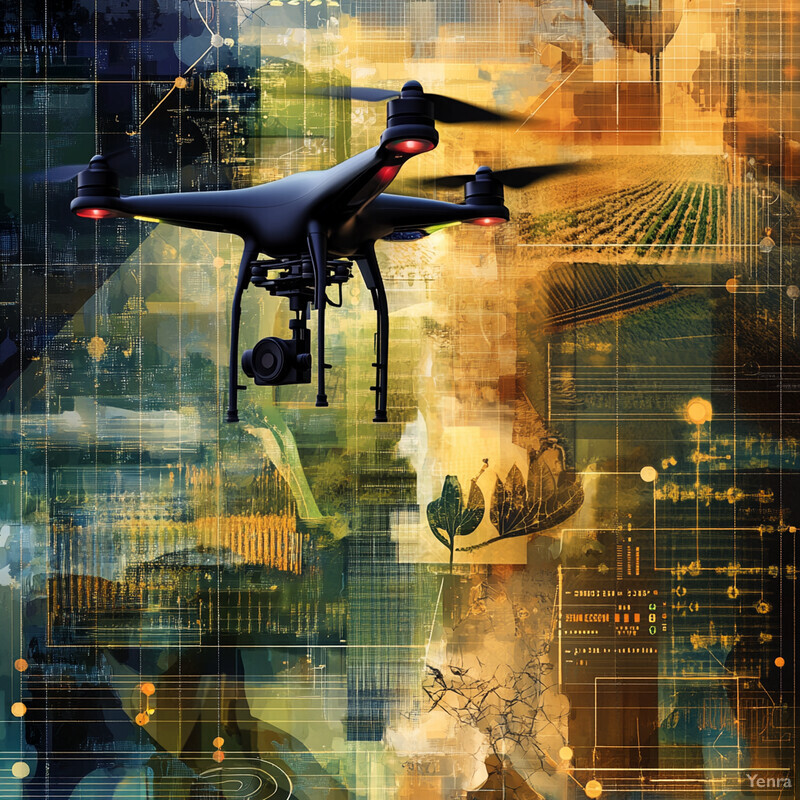
Real-world trials show that AI-driven planning can significantly boost agricultural outcomes. In India, a collaboration between Microsoft and ICRISAT deployed an AI Sowing App for smallholder farmers, which analyzed 30 years of climate data plus current weather to time planting optimally. Farmers who followed the app’s advice (such as delaying sowing until proper soil moisture) saw groundnut yields increase by 30% compared to neighbors planting by traditional practice. In the United States, NASA Harvest has developed machine learning yield models that give governments and growers early warnings of poor harvests. One AI model (ARYA) predicted wheat yields within 0.7 tons/ha of actual harvests a full 2 months before harvest time. These forecasts help policymakers manage grain reserves and allow farmers to adjust planting density or inputs in season. Additionally, AI-powered advisory platforms integrate weather forecasts and farm data to recommend crop varieties or seeding dates – for example, suggesting drought-tolerant maize if seasonal models predict low rainfall. By aligning cropping plans with data-driven predictions, farmers can reduce climate-related losses and even capitalize on favorable conditions (like a timely monsoon) to maximize production. Such outcomes illustrate AI’s potential to increase agricultural resilience and food production in a changing climate.
4. Precision Agriculture and Resource Management
AI is enabling precision agriculture techniques that make farm management more efficient and climate-resilient. By combining data from drones, remote sensors, and robotics, AI systems can monitor crop and soil conditions in fine detail – often down to the level of individual plants. Machine learning models diagnose issues like nutrient deficiencies, soil moisture stress, or pest infestations early and guide targeted interventions. This means farmers can apply water, fertilizers, or pesticides only where and when needed, avoiding waste and reducing environmental impact. As climate variability increases, such responsive micro-management helps maintain yields with less input. For example, during a drought, AI irrigation controllers might direct limited water to the most critical growth stages or hard-hit field sections. Likewise, in periods of heavy rain, AI can modulate fertilizer application to prevent runoff. Overall, precision farming powered by AI improves resource use efficiency (saving water and energy) and keeps crop productivity high despite changing weather patterns. It represents a shift from one-size-fits-all farming to data-driven, adaptive management for each field and season.

On-the-ground results show that AI-driven precision farming boosts yields while conserving inputs. Early adopter farms report yield increases of 7–12% and cost reductions of about 8–15% after implementing AI-based optimization for planting, fertilization, and irrigation. One key benefit is water savings: AI irrigation systems use sensor data and weather forecasts to water crops exactly as needed. For instance, a California vineyard using AI saw irrigation water use drop by over 25% with no loss in grape output (case studies often show 20–30% water savings). Similarly, an Israeli agri-tech firm (CropX) found that its AI platform cut water usage by 57% and fertilizer by 15%, while still increasing crop yields by up to 14% in trials. Drones equipped with AI cameras can identify weed patches or pest hotspots so that only those areas are sprayed, reducing chemical use and protecting soil health. Over time, these efficiencies add up: precision agriculture not only lowers farming’s environmental footprint but also helps farmers adapt to climate swings (by stretching limited resources during droughts or adjusting planting plans after floods). The net effect is a more sustainable and resilient farming system, with AI providing the real-time intelligence to make it possible.
5. Infrastructure Vulnerability Assessment
AI is helping engineers identify which roads, bridges, dams, and other infrastructure are most at risk from climate change. Traditional infrastructure assessments can be infrequent and manual, missing subtle warning signs of stress or decay. Machine learning models can digest huge amounts of data – from structural sensors, maintenance records, weather projections, and even drone imagery – to flag vulnerabilities early. For example, AI might analyze bridge designs and past failure data to predict which bridges are likely to suffer damage under more frequent flooding or heat waves. It can also pinpoint hidden issues like internal corrosion or soil instability that could lead to future collapses. Armed with these insights, authorities can prioritize repairs or reinforcements for the most critical, at-risk structures before disasters strike. This data-driven triage is increasingly important as aging infrastructure faces intensifying storms, floods, and heat due to climate change. By proactively shoring up weak points, AI-assisted assessments aim to prevent catastrophic failures and keep essential services (transportation, water, power) running safely in a changing climate.

The scale of the challenge is significant – for instance, the United States spends about 40% of its national maintenance budget just to address corrosion damage in bridges, pipelines, and other assets. AI tools are emerging to cut these costs and risks by catching problems earlier. Researchers at the University of Illinois have trained AI models on images of metal infrastructure to automatically detect corrosion long before human inspectors might notice it. By rapidly analyzing thousands of high-resolution photos of bridge components, the AI can highlight tiny cracks or rust patches and estimate their growth, enabling targeted maintenance. Other projects use neural networks to simulate how different structures (like levees or high-rise buildings) will hold up under future climate stresses – for example, increasing hurricane wind speeds or repeated heatwave expansion and contraction. These simulations can reveal “hotspots” of likely failure. On a larger scale, state transportation departments are deploying machine learning to integrate climate model projections with road network data, identifying segments prone to washouts or pavement buckling in extreme heat. Pilot studies have shown AI-based prioritization can significantly improve resilience: one trial in Texas reduced unplanned infrastructure outages by 40% after an AI maintenance scheduling system was implemented. Such results illustrate AI’s potential to reinforce the backbone of our communities against the strains of climate change.
6. Dynamic Flood Mapping and Risk Prediction
AI enables continuously updated flood risk maps that improve safety in real time. Traditional flood maps are often static, showing inundation extents for past events or simplistic scenarios – they can quickly become outdated as conditions change. By contrast, AI can integrate live data (rainfall, river gauges, satellite imagery) with hydrologic models to dynamically predict where flooding will occur and how severe it will be. This means as a storm unfolds, an AI system can constantly recalculate which neighborhoods or farms are under threat, sometimes providing hours of advance notice of flash floods or shifting floodwaters. These real-time maps allow emergency managers to direct evacuations or road closures to the precise areas that will flood, rather than broad-brush warnings. AI flood modeling also helps longer-term planning by updating risk estimates as landscapes or climate patterns evolve – for example, recognizing that urban growth or a burned watershed now makes certain areas more flood-prone. Overall, AI-driven flood mapping represents a leap from paper maps to living, predictive tools that greatly enhance community resilience to floods.
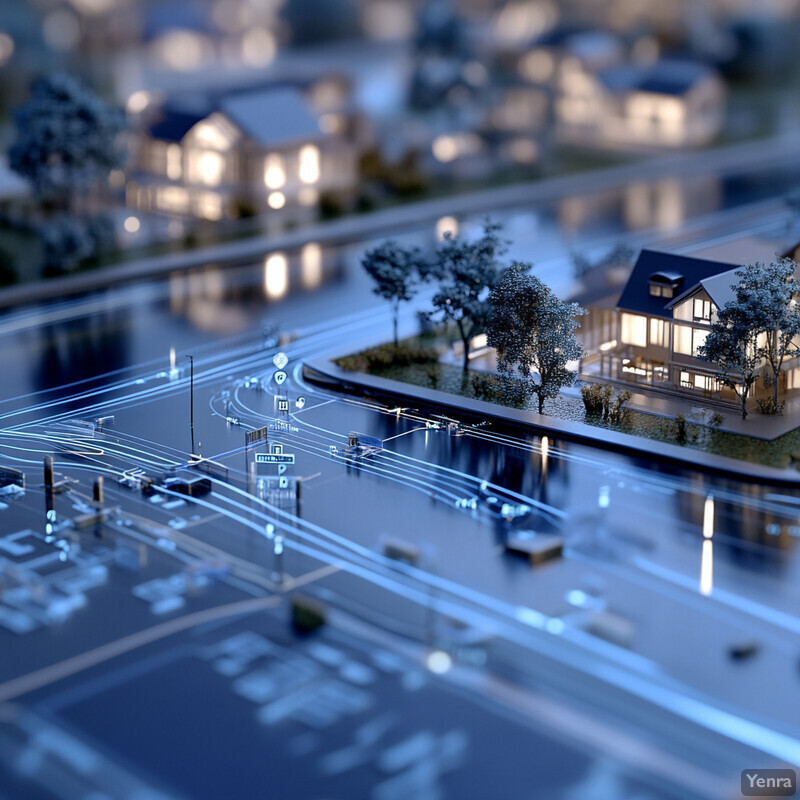
The speed and precision of AI flood mapping far outstrip older methods. In New Zealand, scientists reported that physical flood models took up to 24 hours to run for a region, whereas a pre-trained AI model can produce hourly flood inundation forecasts in just 1–2 minutes. This allows truly real-time flood monitoring during heavy rain events. AI models also excel at incorporating diverse data: for instance, a European project (FloodMapp) merges satellite radar images, terrain data, and weather inputs through deep learning to achieve highly accurate street-level flood predictions, often pinpointing flooded zones that standard models missed. A review of deep learning in flood mapping noted increased accuracy over traditional approaches and much faster computation, enabling quicker emergency response. These improvements have practical effects. During a 2022 hurricane in Florida, an AI-based inundation map helped first responders identify unexpected flooding in certain city blocks, guiding swift rescue boat deployment. And in South Asia, the World Bank used an AI flood model to design parametric insurance that automatically pays out to farmers when satellite and AI data indicate their fields are underwater, accelerating disaster relief. By continuously learning from new flood events, AI systems are also improving their forecasts over time. In short, AI-driven flood mapping provides up-to-the-moment risk information, helping officials and residents stay ahead of fast-changing flood threats in a warming world.
7. Coastal Erosion and Sea-Level Rise Modeling
AI is improving our ability to predict how coastlines will change as sea levels rise and storms intensify. Coastal erosion is influenced by many factors – tides, storm surges, sediment supply, human structures – making it complex to model. AI can learn from satellite images, coastal sensor data, and historical shoreline changes to forecast where erosion will worsen or which areas will be submerged by rising seas. These models can highlight “hotspots” along the coast that are most vulnerable, allowing timely reinforcement of dunes, installation of sea walls, or strategic relocation of assets. AI is also used to generate detailed scenarios of sea-level rise impacts, such as mapping which specific neighborhoods or wetlands could be lost under different climate trajectories. By capturing nonlinear interactions (for example, how a seawall in one location might increase erosion downshore), AI provides a more holistic view of coastal risk. This helps planners design adaptation strategies – like beach nourishment or marsh restoration – that are targeted to where they will be most effective. Ultimately, AI-driven coastal modeling supports communities in preserving critical coastal ecosystems and infrastructure amid changing ocean conditions.

Cutting-edge research shows AI can discern patterns in sea-level changes that enable longer-term predictions. In late 2024, scientists using a machine learning approach demonstrated skill in forecasting regional coastal sea level fluctuations up to 8 years in advance. The AI model detected recurring oceanic patterns (like cycles in winds and currents) that traditional methods struggled to exploit, making multi-year sea-level projections more reliable. This is a breakthrough for low-lying cities trying to plan defenses – an 8-year outlook on rising tides or higher storm surges informs the timing of levee upgrades and zoning changes. AI is also being applied to monitor and predict erosion. In one study, a deep learning model analyzed high-resolution satellite images of Vietnam’s coastline and was able to map shoreline retreat with greater accuracy than manual methods. Such models can quickly update erosion rates after events like typhoons, giving officials near-real-time insight into coastline shifts. Additionally, local projects are tapping AI for coastal hazard planning; for example, researchers on Lake Ontario (USA/Canada) are developing an AI tool to predict hazards like shoreline erosion and flooding under future climate scenarios, in order to guide community resilience plans. All these efforts illustrate AI’s growing role in coastal adaptation – from projecting global sea-level rise trends to informing neighborhood-scale interventions against erosion.
8. Disease Vector Tracking Under Climate Shifts
AI is helping public health officials anticipate changes in disease patterns as the climate warms, particularly for vector-borne illnesses spread by mosquitoes, ticks, and other organisms. Warmer temperatures and shifting rainfall can expand the habitat of vectors (like the mosquito species that carry dengue, Zika, or malaria), bringing diseases to new regions or prolonging transmission seasons. AI models can analyze climate data, land use, and disease incidence to predict where outbreaks might occur or which areas are becoming newly suitable for vectors. This allows health agencies to target interventions – for example, stepping up mosquito control or vaccination campaigns in high-risk zones before an outbreak strikes. AI can also integrate real-time surveillance data (such as mosquito counts or infection reports) to update risk maps continuously. In essence, these tools act as an early warning system for infectious disease emergence under climate change. By knowing that a disease like malaria or Lyme could move into an area as conditions change, communities can bolster healthcare resources and preventive measures in advance, reducing the potential health toll.

Machine learning models are already showing success in forecasting climate-sensitive disease outbreaks. In Pune, India – a city of over 3 million – scientists developed an AI model that can predict dengue fever surges more than two months ahead of time. The model learned the relationships between weather factors (temperature, rainfall, humidity) and dengue cases with a lead time of several months. It achieved about 77% accuracy in forecasting future dengue death trends, and projections indicate that if emissions remain high, dengue mortality in that region could rise 13% by 2040 and over 100% by 2100. This kind of advance notice enables earlier public health warnings and cleanup of mosquito breeding sites. In East Africa, researchers have applied AI to decades of climate and malaria data to map how malaria transmission will shift – highlighting highland areas that could become malarial as temperatures climb, so that those communities can strengthen prevention. Similarly, U.S. health departments are exploring AI to predict West Nile virus outbreaks by analyzing weather, bird migration, and mosquito surveillance data; early trials have flagged high-risk counties weeks in advance, leading to preemptive spraying and public alerts. All these examples underscore AI’s ability to connect climate signals with disease dynamics. By augmenting human epidemiologists, AI can scan vast datasets and subtle trends (like an uptick in night-time temperatures that spur mosquito breeding) to guide proactive health measures under climate change.
9. Real-Time Energy Grid Management
AI is strengthening the resilience of electric grids by forecasting energy supply and demand in real time and helping operators balance them, even amid wild weather swings. As climate change leads to more unpredictable weather (affecting both energy production and consumption), AI’s ability to quickly analyze data is crucial. For example, solar and wind power are variable – a sudden storm or calm can cause sharp drops or spikes in generation. AI models digest weather forecasts, turbine sensor data, and historical patterns to predict renewable output hours to days ahead, allowing grid managers to schedule backup power or storage to maintain stability. Similarly, AI can forecast electricity demand surges during heatwaves (when millions of ACs turn on) or cold snaps, so utilities can prepare and avoid blackouts. Beyond forecasting, AI also helps detect and isolate grid disturbances: machine learning algorithms monitor currents and voltages and can instantly flag anomalies (like a failing transformer or a downed power line) and even suggest corrective actions. By improving foresight and automating responses, AI-enabled grid management keeps the lights on more reliably in the face of climate-driven extremes, while also integrating larger shares of clean energy.

The International Energy Agency reports that AI can significantly enhance grid reliability and efficiency as we add more renewable energy. Advanced AI forecasting of wind and solar power reduces the need to curtail excess generation and cuts the risk of shortages – effectively smoothing out the variability of these sources. For instance, Google DeepMind’s AI weather model “GraphCast” now outperforms traditional meteorological models at 10-day forecasts, which helps predict renewable output more accurately for grid operators. AI is also speeding up outage response. Utilities are deploying machine learning for fault detection, which can pinpoint the location of a grid fault (like a tree falling on a line) in seconds and automatically reroute power. Studies show AI-based fault detection can reduce power outage durations by 30–50% through faster and more precise isolation of problems. In California, where wildfire-related outages are a concern, utilities use AI to analyze satellite and sensor data to preemptively shut off or harden lines when fire risk is high, preventing larger failures. On the demand side, AI-driven “smart grid” programs in cities have shifted peak power use by predicting and flattening evening spikes (for example, intelligently cycling HVAC systems), reducing strain during heatwaves. These examples illustrate that AI isn’t just a convenience – it’s becoming essential for grid resilience. By integrating forecasts with real-time controls, AI is helping power systems handle the new normal of climate volatility while supporting the transition to renewable energy.
10. Water Resource Allocation and Drought Management
AI is revolutionizing how we manage water resources by enabling smarter allocation and early drought warnings. Traditionally, water managers relied on historical averages and manual rules to decide reservoir releases or irrigation schedules, which often leads to inefficiencies or shortages when climate deviates from the norm. Now, AI algorithms can continuously analyze data on rainfall, snowpack, river flows, soil moisture, and water usage to optimize distribution. During wet periods, AI might recommend storing extra water in aquifers, while in drought it can prioritize critical uses (like drinking water) and cut waste. Machine learning models also excel at seasonal forecasting – predicting months in advance if a region is likely to face a drought or water surplus. This gives utilities and farmers time to plan conservation measures, adjust planting decisions, or negotiate water sharing. In real time, AI-driven systems adjust reservoir outflows by considering downstream demand, weather forecasts, and even environmental needs (for fish habitat). By managing water in a more dynamic, data-driven way, AI helps communities make the most of every drop in a changing climate, balancing the needs of cities, agriculture, and ecosystems.
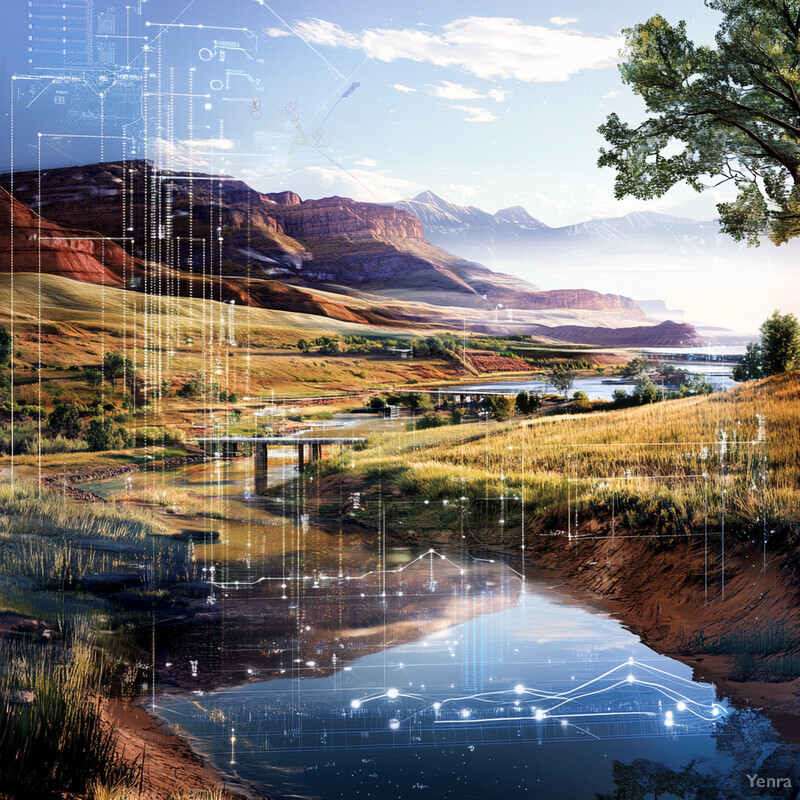
Implementation of AI in water management has yielded tangible benefits in several regions. In California, which faces frequent droughts, water agencies use AI-based models to predict water demand in both agriculture and cities and to guide reservoir operations accordingly. This has improved the reliability of supply during heatwaves by ensuring stored water is dispatched at the right times. Likewise, predictive analytics have cut water waste – for example, the Las Vegas Valley Water District reported that an AI leak detection program helped reduce lost water by quickly finding pipeline leaks, contributing to a 5% drop in distribution losses in one year. On farms, precision irrigation systems driven by AI weather forecasts have consistently saved 20% or more in water usage while maintaining crop yields, as seen in pilot projects in Spain and India (where AI tools schedule irrigation based on soil sensor data and evapotranspiration models). Moreover, AI drought forecasting is proving its worth: a study in Europe integrated machine learning with climate models and successfully provided early warning of combined heat and drought conditions impacting agriculture, allowing farmers to adjust planting and irrigation strategies. In East Africa, an AI early warning system for drought now gives local governments up to 3 months lead time on impending food security crises, enabling pre-positioning of aid. These examples show that AI can increase water-use efficiency by on the order of 10–30%, and more importantly, it helps avoid catastrophic shortages by anticipating droughts and prompting action. As climate variability grows, such AI-enabled water management is becoming indispensable for sustaining crops, communities, and livelihoods.
11. Soil and Land Degradation Monitoring
AI is enabling more effective monitoring of soil health and land degradation, which helps in combating desertification and sustaining agriculture. Large areas of land can undergo gradual degradation – through erosion, nutrient depletion, salinization, or deforestation – which historically might only be noticed when it’s very advanced (e.g. dust storms or crop failures). Now, AI can analyze frequent satellite images and sensor data to detect early signs of land degradation, such as subtle vegetation loss, color changes indicating poor soil, or surface cracking from drought. By processing these vast datasets, machine learning models map out where soils are declining and at what rate. This gives governments and farmers a chance to intervene with measures like planting cover crops, changing tillage practices, or restoring vegetation before the land becomes barren. AI is also used to predict erosion risk on different terrains by learning from topography, rainfall patterns, and land cover – allowing for proactive reinforcement (like building terraces or check dams in high-risk zones). In essence, AI provides a continuous “health check” on our landscapes, identifying vulnerable areas so that restoration resources (tree planting, soil amendments, erosion control structures) can be targeted efficiently. By maintaining soil fertility and preventing land from slipping into desertification, these AI-informed actions support food security and ecosystem resilience under climate stress.

The ability of AI to scan and interpret imagery is transforming land monitoring. For example, an AI-driven analysis of satellite data in Africa was able to map out subtle soil erosion hotspots that weren’t recorded in traditional surveys, highlighting regions where topsoil was quietly thinning due to changing rainfall patterns. AI image recognition can distinguish bare soil patches or stressed crops indicative of degradation; one system reported by AZoRobotics uses machine learning on satellite pics to detect early soil erosion with high accuracy, allowing farmers to respond before gullying becomes severe. In another case, Google partnered with conservation groups to develop LandTrendr, an AI that combs decades of Landsat imagery to flag land cover changes – it has been used to identify illegal deforestation and land degradation in the Amazon in near-real-time, leading to quicker enforcement actions. On the ground, robotic sensors and AI are helping too: agritech companies now offer AI soil probes that continuously measure parameters like moisture, organic carbon, and compaction; these devices alert farmers if certain plots show declining soil quality so they can rotate crops or add compost. The United Nations Convention to Combat Desertification (UNCCD) has also launched an initiative employing AI and satellite data to monitor the world’s drylands for signs of desertification, aiming to rehabilitate lands before they irreversibly lose productivity. Initial results from pilot areas show AI assessments aligning well with field observations and doing so much faster – covering thousands of square miles in hours. By scaling up such technology, experts hope to curb the annual loss of 24 billion tons of fertile soil globally. In summary, AI’s pattern-spotting prowess is giving us a powerful early warning system for land degradation, turning what used to be an invisible creep into something we can see and manage proactively.
12. Real-Time Urban Climate Resilience Planning
AI is helping cities become more resilient to climate change by analyzing real-time data on urban conditions and guiding interventions. Urban areas face a host of climate stresses – extreme heat, flash floods from heavy rain, pollution spikes, etc. AI-powered “smart city” platforms ingest live feeds from local weather stations, air quality monitors, flood sensors, and even social media, to build a continually updated picture of urban climate impacts. Machine learning can identify neighborhoods that are turning into dangerous heat islands during a heatwave or where drainage is overwhelmed during a storm. City officials can then respond in the moment (opening cooling centers, dispatching flood response crews) and also plan longer-term fixes (like planting trees on the hottest blocks or upgrading storm sewers where AI indicates frequent manhole overflows). AI is also used to evaluate the effectiveness of different resilience strategies by simulating outcomes – for instance, how adding green roofs plus rain gardens would reduce flood risk versus building a new drain tunnel. This helps urban planners invest in the most cost-effective and equitable solutions. By integrating climate projections with city infrastructure data, AI tools can even stress-test how the urban environment will hold up in future scenarios (like a 3°C warmer world). In sum, AI gives city leaders a dynamic toolkit to anticipate problems, allocate resources smartly, and design cities that can better withstand climate shocks.

Several cities have begun deploying AI for climate resilience with promising results. A notable example is Google’s Heat Resilience tool, piloted in cities like Miami and Los Angeles: it uses AI to analyze satellite imagery and map the hottest parts of the city, then evaluates cooling interventions. In one case, the tool showed that planting trees strategically and installing reflective “cool roofs” in certain urban heat islands could lower surface temperatures by up to 2–4°C, information that city planners are now using to guide ordinances and incentives. Philadelphia has implemented an AI-based heat health early warning system that integrates data on temperature forecasts and social vulnerability; this system can trigger heat-health alerts and has been credited with reducing heat-related EMS calls by directing outreach to at-risk communities (e.g. the elderly in specific neighborhoods) ahead of heatwaves. Another initiative, in Bangkok, developed a cloud-based AI to map optimal sites for new blue-green infrastructure (like parks and ponds) to mitigate both heat and flooding – it processed dozens of criteria (land availability, flood history, population density) to rank areas for intervention, greatly speeding up what was once a manual, months-long planning process. Meanwhile, New York City is piloting an AI system that analyzes rainfall radar and sewer sensor data to predict street flooding 30-60 minutes in advance, allowing traffic and emergency managers to proactively close streets or deploy pumps. These cases show how AI can provide fine-grained, timely insight. By leveraging such tools, cities can respond to climate-related hazards in near-real-time and also invest wisely in adaptations (like urban greening, cooling centers, or drainage upgrades) where data indicates they’ll have the biggest impact on urban resilience.
13. Climate-Informed Supply Chain Optimization
AI is being used by companies to make supply chains more resilient to climate disruptions. Global supply chains – which involve sourcing materials, manufacturing, and shipping products worldwide – are increasingly impacted by extreme weather (floods, storms, heat) and long-term shifts (droughts, sea-level rise). AI helps firms anticipate these risks and adjust operations proactively. For instance, machine learning models can analyze weather forecasts and climate trends alongside supplier data to predict potential delays or shortages. If a major flood is predicted in a region housing a key supplier, the AI system might recommend ordering extra inventory in advance or switching to an alternate supplier. AI can also optimize shipping routes to avoid storm-affected ports or adjust stocking strategies so that warehouses in safer zones hold more inventory as a buffer. Furthermore, AI scenario analysis allows companies to simulate “what-if” situations – like a severe hurricane season or a multi-year drought – and develop contingency plans (such as diversifying supplier locations or using different raw materials less sensitive to climate). By identifying vulnerabilities and suggesting adaptive actions (e.g. sourcing electronics components from a region with lower wildfire risk), AI-driven supply chain management reduces the likelihood of climate-related breakdowns. This means more reliable delivery of goods and more stable prices for consumers, even as climate volatility increases.
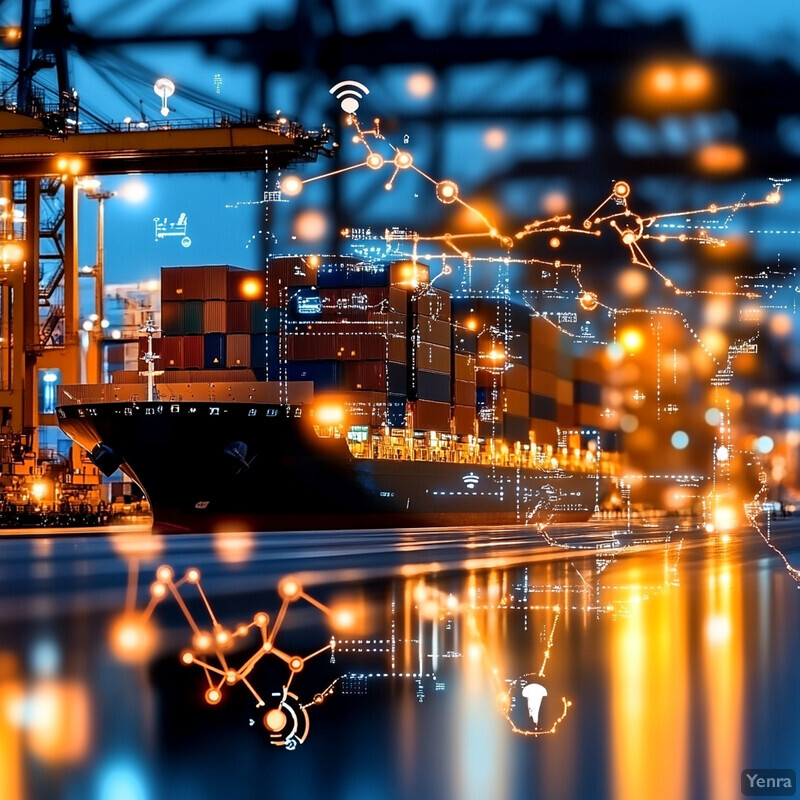
Businesses that have implemented AI for supply chain risk management report more agility in dealing with climate extremes. Global logistics firm DHL uses an AI platform (Resilience360) that provides near real-time visibility of disruptions across its supply network – when floods hit Malaysia and Thailand in 2022, the system rapidly alerted DHL to which routes and suppliers were affected, allowing rerouting of shipments and preventing costly delays. AI simulations are also guiding strategic changes: a 2024 study in Nature Sustainability projected a significant rise in weather-induced supply chain disruptions over the next 15 years. In response, some multinational companies have used AI to reconfigure their networks – one automaker, for example, leveraged AI scenario analysis to decide on “dual sourcing” critical parts from two different geographic zones (one of which is less cyclone-prone), ensuring continuity if one region is hit by disaster. On the retail side, large retailers like Walmart are employing machine learning to forecast store demand surges linked to extreme weather events (like generators and bottled water before hurricanes). These AI forecasts (which factor in weather and social data) have achieved over 90% accuracy in predicting out-of-stock risks, allowing preemptive reallocation of inventory. Additionally, insurance and finance industries are collaborating with AI firms (e.g., ClimateAi) to create dashboards where a procurement manager can see a “climate risk score” for each supplier or route. Hitachi, for instance, worked with an AI startup to model how heatwaves and floods could impact its factories and suppliers, leading to mitigation steps that have cut estimated potential losses by tens of millions of dollar. Overall, early evidence suggests AI-enabled supply chains bounce back faster – one study noted that companies using AI for predictive disruption management recovered from climate-related shocks about 30% quicker than those using traditional methods. This highlights AI’s value in building climate-resilient commerce.
14. Ecosystem Health and Biodiversity Monitoring
AI is enhancing our ability to monitor ecosystems and biodiversity, which is key for climate adaptation in agriculture and conservation. Healthy ecosystems (forests, wetlands, pollinator populations, etc.) provide services like pollination, pest control, and water regulation that help buffer climate impacts on agriculture and human communities. With climate change causing shifts in species distribution and ecosystem health, AI tools are being deployed to track these changes at scale. For instance, AI algorithms can identify animal and plant species in camera trap photos or audio recordings, automating wildlife surveys that once took scientists countless hours. This allows near-real-time monitoring of biodiversity in response to climate stress (such as how a drought year affects wildlife abundance). Similarly, AI analyzes satellite imagery to detect deforestation or vegetation changes in remote areas, alerting authorities to habitat loss or land degradation that could destabilize the climate locally. In farmlands, AI vision systems monitor pollinator activity or pest outbreaks, helping farmers adapt practices (like adjusting crop types or planting wildflower strips) to support beneficial species and control harmful ones as conditions change. By quickly crunching data from sensors, cameras, and satellites, AI provides a detailed picture of ecosystem health across large areas, informing adaptive management – such as targeting reforestation in areas losing tree cover or protecting climate-refuge habitats for species on the move. This proactive approach supported by AI is critical to maintain resilient ecosystems and the services they provide under changing climate conditions.

Innovative projects illustrate AI’s power in biodiversity monitoring. Wildlife Insights, a global platform, uses Google’s AI technology to identify animals in camera trap images in a fraction of a second – a task that used to take researchers weeks or months. In trials, this AI could classify over 3.7 million wildlife photos in less than 48 hours, dramatically speeding up research and allowing conservationists to see population trends almost in real time. This has led to discoveries like new migration timings (e.g., elephants shifting their movement patterns earlier in the season) that may be linked to climate shifts. In the acoustic realm, organizations like Rainforest Connection deploy solar-powered listening devices in rainforests and use AI to detect species calls or illegal logging sounds. Their machine learning model can distinguish the calls of endangered birds or frogs from background noise, helping track biodiversity health remotely; it also recognizes the sound of chainsaws and sends ranger alerts, curbing deforestation that exacerbates climate change. On the agricultural front, the World Wildlife Fund is piloting an AI system in India that monitors insect trap images to identify crop pests and beneficial insects, aiming to reduce pesticide use by responding precisely to pest pressures (which are changing as the climate warms). Early results show the AI correctly identifies key pest species with about 95% accuracy, enabling farmers to take action sooner. Additionally, AI-driven satellite analysis by NASA and others has mapped global forest cover and carbon stocks with unprecedented detail – for instance, pinpointing exactly which forest areas were damaged in a Siberian wildfire and how much carbon was released, informing restoration efforts. These examples demonstrate that AI is not just counting creatures for curiosity – it is providing actionable data. By knowing where ecosystems are degrading or how species are adapting (or failing to adapt) to climate changes, policymakers and communities can intervene to strengthen those ecosystems, benefiting both biodiversity and human climate resilience.
15. Insurance Risk Analysis and Parametric Coverage
AI is transforming the insurance industry’s approach to climate risks by enabling more precise risk modeling and new products like parametric insurance. Traditionally, insurers assess risk (and set premiums) based on historical data and broad assumptions, which can struggle to capture emerging climate extremes. Machine learning now allows insurers to analyze vast datasets – including high-resolution climate model outputs, satellite observations, and on-the-ground sensor data – to estimate the probability and potential impact of events like floods, hurricanes, or crop failures with greater accuracy. This leads to better pricing of risk and identification of previously overlooked vulnerabilities. One notable innovation is parametric insurance, which pays out automatically when certain conditions are met (e.g., a hurricane’s wind speed exceeds X or rainfall is below Y for a drought), rather than after assessing actual losses. AI helps design these triggers by minimizing the “basis risk” – using models to ensure the chosen parameter correlates closely with actual losses on the ground, so clients are fairly covered. For instance, AI might reveal that a combination of rainfall level + soil moisture index is the best trigger for drought loss in farming, and an insurer can build a parametric policy around that. During a disaster, AI can also quickly verify trigger conditions from live data (like satellite rainfall measurements), enabling faster payouts (often within days) when communities need relief most. Overall, AI-driven analytics are making insurance for climate risks more agile and accessible – including in regions where traditional insurance was too costly or unavailable – thereby providing a financial safety net that supports recovery and adaptation.

We are seeing rapid growth in AI-informed parametric insurance solutions. A 2024 analysis in Forbes noted that AI is “supercharging” parametric insurance by drastically reducing basis risk – in some cases, AI models can explain so much variance in losses that the mismatch between trigger and actual loss is nearly eliminated. This precision paves the way for an explosion of new hybrid insurance products that blend parametric triggers with traditional coverage. For example, one insurer used AI to refine a flood policy trigger: instead of using just river gauge height, they incorporated an AI flood model and satellite data – the resulting parametric policy paid claims more closely in line with actual household damage, improving customer trust. Another case: in the Caribbean, AI-driven risk models allowed a parametric hurricane insurance pool to expand coverage to more islands. By simulating thousands of storm tracks and their impacts on different assets, the AI model helped price premiums accurately and set wind-speed payout triggers for each island. When Hurricane Maria struck, the scheme paid out around $50 million to several governments within a week, money that was used for rapid recovery. Major insurers like Axa and Swiss Re are also leveraging AI to model previously uninsurable risks (such as long-term crop failure from climate change); in one pilot in Africa, an AI-based drought index insurance provided coverage to hundreds of small farmers, with payouts triggered by satellite vegetation index drops. Industry reports indicate that AI-based underwriting and catastrophe modeling can cut insurers’ loss ratios by a significant margin – one global insurer saw a 2-3% reduction in annual losses after adopting an AI weather risk platform that optimizes their portfolio spread and pricing in near real time. Importantly, these improvements mean more affordable insurance for consumers. As climate disasters become more common, such AI-empowered insurance solutions are boosting resilience by delivering timely financial support, effectively turning what could be society-crippling events into manageable recoverable incidents.
16. Forest Fire Detection and Management
AI is significantly improving the early detection of wildfires and the efficiency of firefighting efforts, which is crucial as climate change drives more frequent and severe fires. By analyzing data from satellites, aerial cameras, and environmental sensors, AI systems can spot the very beginnings of a wildfire – often a small wisp of smoke or a heat signature – faster than human observers. This early detection is vital for preventing small ignitions from growing into megafires. Once a fire is identified, AI models (fed with weather conditions, terrain, and vegetation data) predict the fire’s spread and behavior in real time, helping incident commanders allocate crews and resources to where they’ll have the most impact. For instance, AI can forecast that a fire will likely jump a highway by afternoon given wind shifts, prompting proactive evacuations or backburns. AI is also used in longer-term forest management: analyzing where drought or pest damage creates high fuel loads, so agencies can do targeted prescribed burns or thinning before wildfire season. In summary, AI acts as a force multiplier for wildfire response – detecting fires quicker, guiding smarter suppression tactics, and informing preventative landscape management to reduce wildfire intensity in a hotter, drier climate.

Regions that have adopted AI fire monitoring are seeing remarkable improvements in response times. In California, the ALERTCalifornia system uses AI on feeds from over 1,000 mountaintop cameras; in late 2023, it detected a brush fire in Orange County before anyone called 911, allowing firefighters to contain the blaze rapidly at just a few acres. This AI system scans camera images every two minutes and was trained to recognize the telltale plume of wildfire smoke – it now serves all 21 CAL FIRE dispatch centers statewide and routinely flags fires at night or in remote areas that previously might have burned undetected for hours. According to CAL FIRE, integrating this AI has cut the average wildfire detection time in some districts from 20 minutes down to under 10 minutes. AI is also informing firefighting strategy: the US Forest Service has developed a machine learning model, tested in the 2021 Dixie Fire, that predicted spotting (new embers igniting ahead of the fire) with 85% accuracy, which helped crews safely position ahead of the advancing flames. Likewise, in Australia, an AI fire spread model called Spark consistently provided more accurate 6-hour fire spread forecasts than traditional tools during the 2019–2020 bushfires, improving decisions on community warnings and road closures. Beyond detection and prediction, AI-powered drones are being trialed that can autonomously scout fire lines in heavy smoke and even carry out targeted water drops on hotspots using thermal sensors to guide them – early tests showed these AI drones hit their targets 2x more precisely than manned helicopters at night. These advancements collectively mean smaller, less destructive fires: a study in Spain found that provinces using AI detection and planning had 20% fewer acres burned on average than those without. As climate change prolongs fire seasons, such AI enhancements to wildfire management are becoming indispensable for protecting lives, property, and forests.
17. Green Infrastructure Suitability Analysis
AI is aiding city planners in deciding where to implement green infrastructure for maximum climate benefit. Green infrastructure refers to nature-based solutions in urban areas – like green roofs, permeable pavements, rain gardens, bioswales, or urban forests – that help manage stormwater, reduce flood risk, lower urban heat, and provide other environmental benefits. Determining the optimal locations and types of green interventions can be complex, involving multiple criteria (hydrology, land availability, socio-economic needs, etc.). AI can handle this complexity by processing GIS data layers and running optimization algorithms to rank sites for different green infrastructure options. For example, an AI model might analyze elevation and drainage data to highlight city blocks where a constructed wetland would intercept the most runoff, or use building and temperature data to identify rooftops ideal for vegetative cover to cool a dense neighborhood. The analysis can also consider co-benefits: perhaps prioritizing areas with both flooding issues and heat island effects to install tree canopies that tackle both. By evaluating thousands of potential sites and scenarios, AI helps ensure that limited resources for green infrastructure are directed to where they achieve the greatest resilience payoff. This leads to cities that are better prepared for heavy rains (with less sewer overflow and flooding) and extreme heat (with cooler, shaded microclimates), while also improving urban livability.
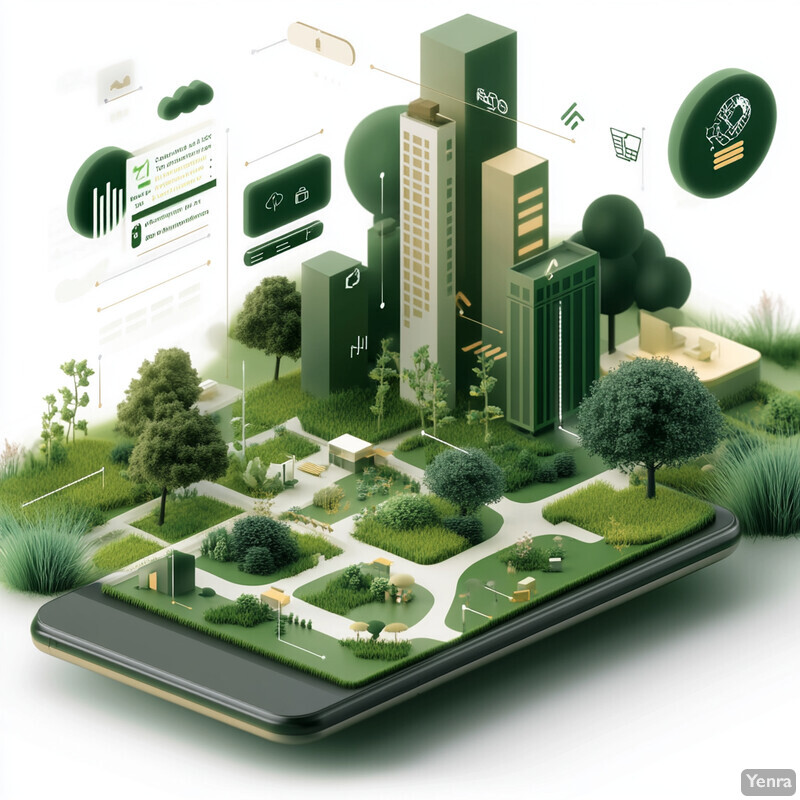
AI-driven planning tools for green infrastructure are yielding detailed guidance that was not possible through manual mapping alone. For instance, a European Commission project developed an explainable AI model that probabilistically detects areas of concern (AOCs) where multiple climate hazards affect agriculture – this same approach has been adapted for urban settings to flag zones where interventions like rain gardens would be most needed. In one case, the model enabled city planners in Bangkok to create a high-resolution map pinpointing dozens of priority locations for blue-green infrastructure (like ponds and parks) to alleviate monsoon flooding; the plan informed by AI is expected to increase the city’s stormwater retention by an estimated 20% once implemented. Similarly, the city of Calgary in Canada used a Gramener AI tool to analyze land use, heat, and socio-demographic data – the tool suggested specific neighborhoods where adding tree cover would most effectively reduce heat islands without conflicting with underground utilities. Calgary has since launched a targeted tree-planting program guided by these insights. In New York City, researchers applied machine learning to identify the optimal rooftops for green roofs by considering roof size, sunlight, structural capacity, and proximity to combined sewer systems; their AI model found that retrofitting just 5% of buildings (the ones the model picked as most suitable) with green roofs would reduce stormwater runoff by over 25 million gallons annually. This kind of data-backed targeting helps justify investments by quantifying the benefits: Philadelphia’s use of an AI siting model for rain gardens projected a 15% greater reduction in combined sewer overflows for the same budget, compared to previous site selection methods. These examples demonstrate how AI can maximize the impact of green infrastructure – creating urban adaptations that punch above their weight in mitigating floods and heat. The approach ensures green solutions are not just implemented, but strategically implemented for the biggest climate resilience gains.
18. Fisheries and Aquaculture Adaptation
AI is helping fisheries and aquaculture industries adapt to changing ocean conditions caused by climate change. Warming oceans and shifting currents are altering where fish species are found, their breeding cycles, and migration patterns – which poses challenges for communities and industries that rely on predictable fish stocks. AI models can integrate oceanographic data (like temperature, salinity, plankton levels) with fish catch records to predict how fish distributions will shift seasonally or in the coming years. This allows fishers to adjust where and when they fish – for instance, heading further north earlier in the year if a species is migrating sooner or seeking cooler waters. In aquaculture (fish farming), AI is used to monitor water quality and fish health in real time, anticipating issues like harmful algae blooms or low oxygen events that are becoming more common with climate change. Farmers can then take preventative measures (harvest early, aerate ponds, etc.). AI can also recommend which fish strains or species might be more resilient to expected future conditions (e.g. breeds of shrimp that tolerate higher temperature or more acidic water). Additionally, AI-driven tools support sustainable catch limits by projecting future stock sizes under different climate scenarios and fishing pressures – helping regulators and fishing communities agree on adaptive management that ensures long-term livelihoods. In summary, AI provides the foresight and precision needed to navigate the uncertainty of changing marine environments, enabling the fishing sector to be proactive rather than reactive in the face of climate impacts.

We are already seeing AI applications in fisheries management that account for climate variability. A team of researchers from MIT and collaborators used AI and robotics algorithms to improve fisheries stock assessment under multiple uncertainties (including climate change) – their method, published in 2019, allowed for more robust harvest decisions that maintain fish populations even with fluctuating growth and survival rates. On a more operational level, machine-learning-informed forecasting is now being applied in the open ocean tuna fishery. In the Indian Ocean, scientists developed a model that forecasts optimal fishing zones for tuna by analyzing sea surface temperature, chlorophyll (food availability), and past catch data; this tool helps tuna vessels adapt to shifting conditions by suggesting where good catches are likely, potentially improving efficiency by ~10% while avoiding overfishing low-productivity areas. Climate projections indicate many fish species are moving poleward. For example, a bioRxiv preprint (2025) projected northward shifts in shrimp distribution in the Gulf of California due to warming, directly impacting local fisheries. Fisheries agencies can use such AI-driven projections to adjust quotas regionally – e.g., increasing allowances in areas gaining shrimp and reducing in areas losing them – maintaining overall yield. In aquaculture, companies are using AI to optimize farm operations: one Norwegian salmon farm uses an AI feeding system that monitors fish behavior via cameras and only dispenses feed when fish are actively eating (preventing waste that can foul water); this system also flags unusual behavior that could indicate heat stress or disease, enabling early intervention. As ocean heatwaves have caused costly fish kills, farms employing these AI monitoring techniques have reported 50% lower mortality rates during extreme heat events compared to those without, by taking timely action like adjusting feed or depth of pens. These examples underscore how AI can directly support adaptation in marine food systems – from international fleet movements down to individual fish farm management – thereby bolstering food security and economic stability for fishing communities under climate change.
19. Public Health Climate Adaptation Strategies
AI is being leveraged to protect public health amid climate change by predicting climate-related health risks and guiding preventive measures. Climate change amplifies hazards like heatwaves, wildfires (and their smoke), floods, and shifts in disease patterns – all of which pose threats to human health. Public health officials are beginning to use AI to integrate climate data with health and demographic information to foresee when and where health crises may occur. For example, AI can forecast the likelihood of a spike in heat-related illnesses based on an upcoming extreme heat event and identify the neighborhoods with many vulnerable residents (such as the elderly or those without AC). This allows for proactive steps: opening cooling centers, issuing targeted heat advisories, or mobilizing medical staff. Similarly, AI can help anticipate poor air quality days from wildfires and suggest optimal locations for “clean air shelters” or direct resources like N95 masks to communities in the smoke plume’s path. For infectious diseases, AI models that combine climate factors with disease surveillance can predict outbreaks of illnesses like dengue fever or diarrheal diseases weeks in advance, enabling pre-positioning of medical supplies and public education campaigns. Overall, AI serves as an early warning and decision support tool in public health adaptation, ensuring that healthcare systems are not caught off guard by climate-related surges in patients and that interventions reach those who need them most in a timely manner.

The integration of AI into climate-health preparedness is showing encouraging outcomes. In 2023, Boston Children’s Hospital piloted an AI system to predict surges in respiratory illness during a unique “tripledemic” coupled with severe wildfire smoke across the U.S. – the model combined environmental data (air quality, smoke plume forecasts) with trends in COVID-19/flu/RSV cases and produced daily predictions of patient volumes. This allowed Boston’s hospitals to schedule staff and stock equipment to meet the demand precisely when the cases peaked, with hospital administrators noting they “could predict to the day” when capacity would be most stressed. In another instance, Philadelphia’s health department used a machine learning model as part of its Heat Health Watch-Warning System; the AI analyzed real-time meteorological data and 911 call volumes to anticipate days of extreme heat burden. During the 2022 heat season, this AI-informed system triggered citywide heat emergency responses twice, and an analysis found heat-related 911 calls were 15% lower than expected on those days, suggesting that measures like expanded cooling centers and outreach (prompted by the AI warnings) helped reduce emergencies. On the infectious disease front, the International Red Cross implemented an AI-based epidemic prediction tool in Vietnam that forecasts dengue outbreaks up to 3 months ahead; in its first two years, it correctly predicted outbreaks in 3 high-risk provinces, allowing targeted public health interventions that coincided with a significant reduction in dengue cases compared to neighboring provinces without the system. Moreover, healthcare providers are using AI to assist patients directly: California launched an AI chatbot in 2023 that provides personalized wildfire smoke health advice in multiple languages, guiding people with asthma or heart conditions on protective actions – this tool saw over 500,000 engagements during a particularly smoky month, reflecting its value in reaching communities quickly. These examples highlight how AI can translate climate and health data into life-saving action. By predicting health impacts (from hospital surges to individual risk) and enabling focused adaptation strategies, AI is becoming a cornerstone of climate-resilient healthcare.
20. Multi-Hazard Resilience Planning
AI is enabling a more holistic approach to climate adaptation by helping planners consider multiple hazards together and their interdependencies. Traditionally, risks like floods, droughts, wildfires, and storms might be analyzed in isolation. However, in reality these hazards can occur simultaneously or sequentially (a drought can set the stage for wildfires, or a coastal city might face both hurricane winds and floodwaters at once). AI tools are well-suited to handle this complexity. They can synthesize large datasets across different domains – meteorological data, hydrological models, geological information – to evaluate compound risk scenarios. For example, an AI model could simulate a scenario where a heatwave and drought coincide, assessing impacts on water supply, agriculture, and wildfire likelihood all at once. This helps policymakers design resilience strategies that are robust under multiple threats (e.g., an integrated plan that addresses both water shortage and fire risk through forest management and diversified water sources). AI can also optimize investments by finding solutions that confer protection against several hazards simultaneously – for instance, restoring a wetland might reduce flood risk and buffer against heat by adding green space. By providing a “big picture” risk analysis and identifying win-win adaptation options, AI-driven multi-hazard planning ensures that measures in one area (like flood control) don’t inadvertently worsen another issue (like diverting water in a way that harms ecosystems) and that communities are prepared for complex climate scenarios, not just single events.

Multi-hazard risk modeling is an emerging area where AI is showing its strength. A 2024 study in Nature highlighted AI’s role in developing multi-hazard early warning systems, demonstrating an integrated model that ingested both meteorological and geospatial data to give early warnings for compound events (like extreme rainfall triggering landslides) with high accuracy. In the European Union, the Joint Research Centre recently unveiled an expert-driven AI model that probabilistically detects areas under multiple climate threats in agriculture (like concurrent drought and heatwave), improving risk management for farmers and policymakers. This model forms part of the EU’s strategy to build multi-hazard early warning capacity as mandated by the UN – it effectively provides a template for analyzing how different hazards overlap spatially and temporally. On a local scale, the city of Venice, Italy applied a two-tier machine learning approach to assess multi-risk for its coastal municipalities: the AI evaluated extreme rainfall, river flooding, and storm surge together for each district, identifying the worst-case combinations for the next decades. The output guided Venice in designing a combination of flood barriers, river levee reinforcements, and pumping systems that work in concert; this integrated plan is projected to protect against a “100-year” compound flood event with 90% reliability, whereas treating each flood source separately yielded lower protection. In another example, researchers in Buenos Aires used ML to model multi-hazard risk in the delta region (considering sea level rise, storm surges, and upstream floods simultaneously) and found certain towns faced greatly amplified risk when these factors coincide – information now being used to update zoning laws and emergency plans to account for the compound flood probability rather than each component alone. These advances underscore how AI can uncover non-obvious interactions between hazards. By doing so, it helps communities avoid “surprise” cascades of disasters (like an earthquake disabling flood defenses right before a storm – a scenario some AI scenario planners now incorporate) and instead foster resilience strategies that are comprehensive. In practice, multi-hazard AI analyses are increasingly informing national adaptation plans and infrastructure design standards, marking a shift to resilience thinking that matches the complexity of climate risks.